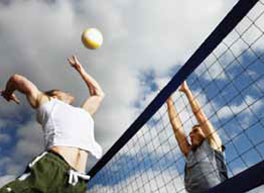
Patellar tendinitis, also known as jumper’s knee, is an injury to the tendon connecting the kneecap to the shinbone. This condition generally affects athletes, often basketball and volleyball players, who jump frequently and put repeated stress on the patellar or quadriceps tendons. But jumper’s knee can also affect high- and long-jumpers, soccer players, weight-lifters and cyclists—and even people who are not athletes.
The repeated stress caused by jumping can lead to tiny tears in the tendon, which, if they become numerous, can cause pain, inflammation and a weakening of the tendon structure. The first sign of patellar tendinitis is usually pain between the kneecap and shinbone during physical activity or after an intense workout. Left untreated, the pain can interfere with your sports performance and even with daily tasks, such as climbing stairs or rising from a chair.
Depending on the degree to which your patellar tendinitis has progressed, we may recommend the following:
- ice packs or ice massage
- decreasing activities that put stress on the knee
- extended rest
- regular stretching exercises to help lengthen the muscle-tendon unit
- eccentric exercises, which involve lowering your leg very slowly after you extend your knee
- use of a patellar tendon strap, which may relieve pain by distributing force away from the tendon itself
You can take steps to prevent jumper’s knee. Eccentric exercises strengthen the thighs and help them better handle the stressesyou place on your tendons. And if you do notice knee pain while playing a sport, stop immediately and rest until your knee is free of pain.
If you think you may have developed jumper’s knee, call us to make an appointment. We can assess the severity of the condition and design a program that will relieve your pain and get you back to your favorite sport as soon as possible.









